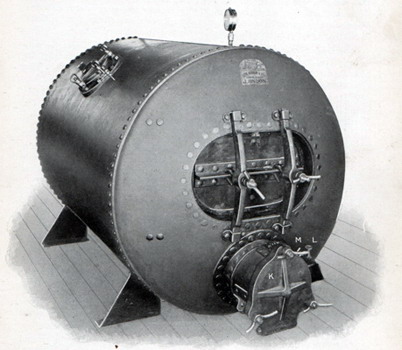
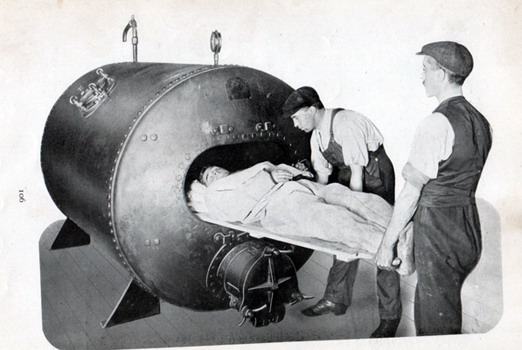
Introduction
There are two types of chamber both of similar construction and design but with
differing uses. They are:
Recompression chamber; This type of chamber is used for medical purposes. Should
a diver come up too quickly or miss a decompression stop or stage stop the diver
should be returned to the depth from which he came. Then he can ascend to the
surface using the appropriate decompression tables. Whilst an effective solution
and one which was used in the earlier part of diving history a safer and more
easily controlled method than 'in water recompression' was the use of a
recompression chamber. Upon surfacing and showing signs of decompression illness
the diver would be placed in a steel pressure tank and pressurized or
recompressed to a pressure equivalent to the depth he was working . Using
specially developed tables or decompression tables the pressure could be
gradually reduced and the symptoms of decompression illness alleviated. Sadly
this treatment did not always work. Divers to day are still treated in similar
ways and during decompression breath an enriched mixture of air or pure oxygen.
 |
 |
| A Siebe Gorman Recompression Chamber designed by Sir Robert H Davis around 1930. | |
As well as the
static type chambers as above, portable chambers were developed which could be
easily transported to remote locations or places such as ships.
Pioneers in the development of these chambers were The Draeger Factory in
Germany who developed several such portable and lightweight devices.
One such device was the collapsible or telescopic chamber as illustrated below.
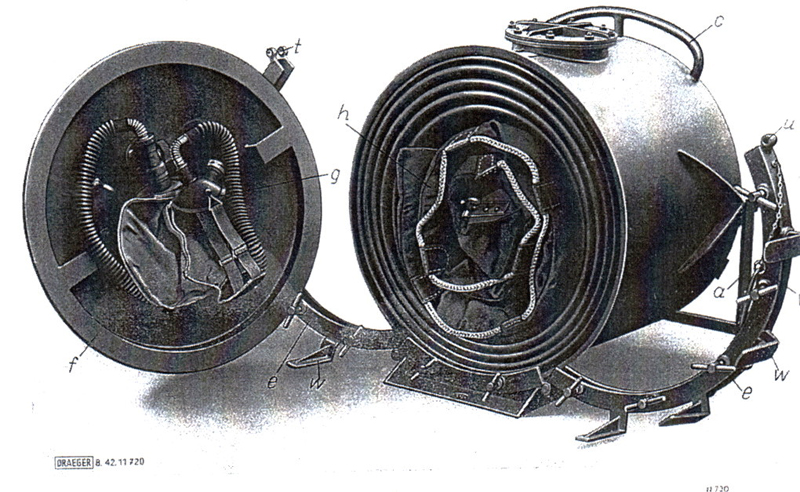 |
||
|
In the collapsible
recompression chamber there is an oxygen inhalation mask g and a diver's
mattress h. There is a viewing port on the top of the chamber to view the casualty. The lid of the chamber is fastened by a clamping device which fastens the lid to the body of the chamber. |
||
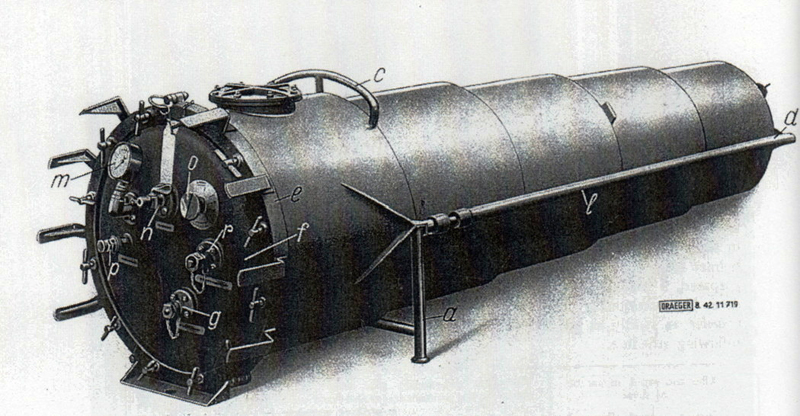 |
||
|
The chamber is seen here in
its constructed state. The bars l hold the chamber in a rigid state. There is a pressure gauge or manometer m whilst n provides for an air inlet connection and connection r is to connect a pump if required. |
||
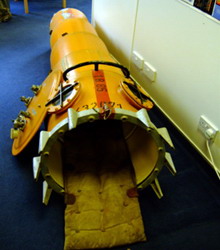 |
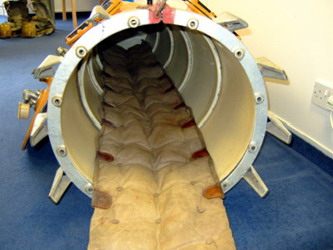 |
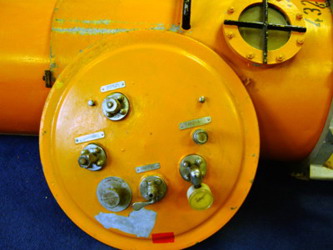 |
|
Photo courtesy of Warren
Hastings taken at the Diving Diseases Research Centre Plymouth. |
||
|
This
Draeger recompression chamber is not telescopic but moveable as it is
fitted with wheels. |
||
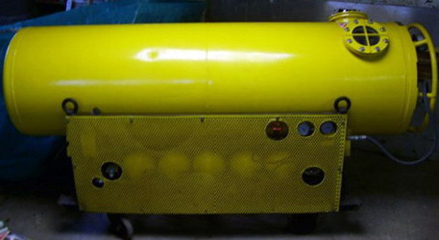 |
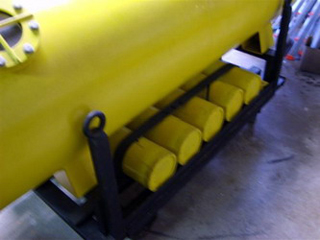 |
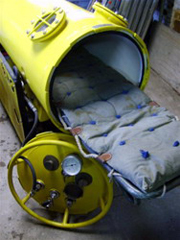 |
|
This
portable chamber has air or oxygen cylinders fitted below the chamber. |
||
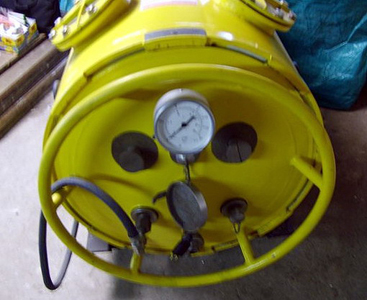 |
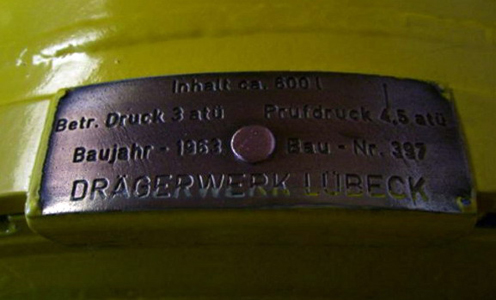 |
|
The lid of the chamber is sealed with a 1/4 turn. the makers plate gives the serial number and the date of manufacture 1963. |
|
Photos by Diving Heritage
Please email a photo and a description to info@divingheritage.com
Copyright © by Diving Heritage 2008